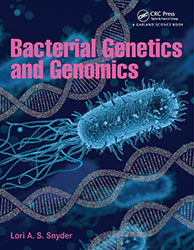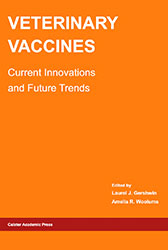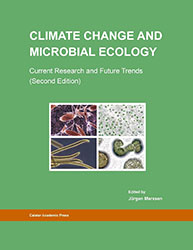Reviews
Issue: Life on a Changing Planet
11 May 2021 article

Leeuwenhoek’s Legatees and Beijerinck’s Beneficiaries: A History of Medical Virology in The Netherlands

By Gerard van Doornum, Ton van Helvoort and Neeraja Sankaran
Amsterdam University Press (2020)
£39.46 ISBN: 978-9-463720-11-3
This book provides a detailed historical perspective on the development of medical virology in Amsterdam and aims to fill a gap in the history of Dutch virology. The book title pays tribute to the contribution of two major Dutch scientists, Antony van Leeuwenhoek and Martinus Beijerinck. The book covered the origin of the nature of viruses, redefinition of viruses, key institutes or laboratories where major advancements were made as well as tools and techniques that were developed to aid the development of medical virology in the Netherlands. Developments were sequentially presented and Dutch virology laboratories where discoveries were made and the leading figures who contributed to the field were also covered in a chronological fashion. Comparisons were also made to the developments of medical virology in the Netherlands with the rest of the world. Many key collaborations among biologists, engineers, veterinarians, scientists leading to the discovery and innovations were also highlighted. Besides, contributions of other fields such as botany and veterinary medicine that shaped the field were also emphasized. The use of references from scientists, articles, journals, books, historical records, conference proceedings, seminars, workshops and many resources during the twentieth century made this book an interesting and engaging read. This book will be a valuable addition to any library and to any bioscience student who is interested in the history of microbiology, basic research, infectious diseases, epidemiology, antiviral drugs and vaccination.
Arindam Mitra
Adamas University, India

Bacterial Genetics and Genomics
By Lori A.S. Snyder
Taylor & Francis Ltd (2020)
£47.99 ISBN: 978-0-815345-69-5
When it comes to the microbial genetics and genomics field, there are a plethora of well-known textbooks and practical guides to starting with. Most of them are either in-depth focused on microbial molecular biology processes or established methodologies, which are in constant change under the current multi-omics era. As a result, both the inexperienced reader and even the specialist have to turn to broader references to start their learning or to review their theoretical background, respectively. However, it is rare to find a clear, concise and really didactic book to attend to their needs. From the undergraduate student to the already-skilled researcher, Snyder’s Bacterial Genetics and Genomics satisfies their needs, finding a fine balance in a plain, engaging and beautifully illustrated text.
Elegantly organized in coherently linked units, Bacterial Genetics and Genomics introduces both simpler and complex concepts in an involving and straightforward reading. The author intersects the theory and practical applications when always feasible, leaving room for further deepening of the learning. The book is structured by acknowledging the cornerstone of past research that paved the way for the field. Gradually, Bacterial Genetics and Genomics bring to light the contemporary and cutting-edge -omics and bioinformatics approaches with striking naturality. In this particular regard, it is remarkable how clear the essential workflow to the analyses of bacterial genomic data is presented in an uncomplicated language. It should also be praised to the discussion of the ecology and evolution of bacteria and their viruses by the lens of their molecular biology and genome biology, contextualizing with the global concerning challenges, such as antimicrobial resistance. As it has reminded me why I love to study bacteria through their genomes, the wide incorporation of Bacterial Genetics and Genomics as a basic reference in the undergraduate and postgraduate curriculum will surely help to inspire the next generation of bacteriologists.
Bruno Francesco Rodrigues de Oliveira
Federal University of Rio de Janeiro, Brazil

Veterinary Vaccines: Current Innovations and Future Trends
Edited by Laurel J. Gershwin and Amelia R. Woolums
Caister Academic Press (2020)
£199 ISBN: 978-1-913652-59-3
This is a book published in 2020 that presents the latest research on veterinary vaccines. The book covers a range of vaccine technologies and immunotherapy and has been organised into seven chapters with each covering a different aspect of veterinary vaccines from cancer through to infectious diseases. Each chapter is organised into sections starting with an abstract, followed by an introduction allowing the reader to gain a broad understanding of the topic before providing more detailed information. By reading this book a researcher will gain a broad understanding of the background of various vaccine technologies, through to the application of that technology in the veterinary context. Chapters have been written by various researchers and this is one of the strengths of the book as the content is presented in a format that a researcher, even if they are new to the field, could easily grasp. However, due to the limited use of relevant illustrations in the various chapters, some concepts, may be more difficult to grasp for some readers. The inclusion of chapters covering topics such as adjuvants and bioinformatics in particular provide information that a vaccine researcher would find very useful particularly if they are relatively new to the field. Overall, the book is a valuable resource for research students and scientists working on veterinary vaccines.
Thiru Vanniasinkam
Charles Sturt University, Australia

Climate Change and Microbial Ecology: Current Research and Future Trends (Second Edition)
Edited by Jërgen Marxsen
Caister Academic Press (2020)
£199 ISBN: 978-1-913652-57-9
An extensive approach to climate change and the problems microbial communities experience to combat demanding challenges. Climate Change and Microbial Ecology: Current Research and Future Trends is focused on the understanding of microorganisms and the contributions and responses they make to their ecosystems, from aquatic environments to soil and inland water systems.
This second edition is sectioned into sixteen chapters each covering various topics by experts from across the field. Each chapter varies in complexity and the lengths depend on the level of concentration for each topic. Marxsen has structured the book perfectly and engages the audience with fascinating images and conceptual diagrams that support the text concisely. The first few pages highlight additional books of interest and include a description of the first edition and current edition to the title in an attempt to familiarise its readers with previous trends. Each chapter is structured similarly, with an introduction to each topic and the microbes of interest, finishing with a conclusion including future challenges within its environment. Throughout the book, there are moments to reflect on each piece of writing which summarises the work of those involved and the uncertainties that arise. There is a reoccurring theme of aquatic protozoans and heterotrophic species which is prominent especially in the first couple of topics.
For individuals either as students, scientists in the field or those interested in global climate change intrigued by microbial ecology and environmental science, this book is heavily descriptive and delivers an informative guide to the relations of climate change in primarily aquatic and soil-based communities of microorganisms. I have found this book to be very factual, easy to navigate, and provides us with a clear insight into immerging bacteria around the world that any level of reader would be able to comprehend.
Bradley Crowson
The Open University, UK
